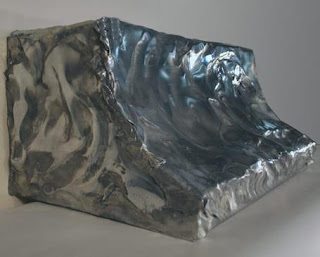Rubidium is a chemical element with the symbol Rb and atomic number 37. Rubidium is a soft, silvery-white metallic element of the alkali metal group. The atomic weight is 85.4678. Elemental rubidium is very soft and highly reactive, with properties similar to other elements in group 1, such as very rapid oxidation in air. Rubidium has one stable isotope,85Rb. The isotope 87Rb which composes almost 28% of naturally occurring rubidium is slightly radioactive, with a half-life of 49 billion years—more than three times longer than the estimated age of the universe.
Two German chemists, Robert Bunsen and Gustav Kirchhoff, discovered rubidium in 1861 by the newly developed method of flame spectroscopy. Its compounds have chemical and electronic applications. Rubidium metal is easily vaporized and has a convenient spectral absorption range, making it a frequent target for laser manipulation of atoms.
Rubidium is not known to be necessary for any living organisms. However, like caesium, rubidium ions are handled by living organisms in a manner similar to potassium ions: it is actively taken up by plants and by living animal cells.
Rubidium is the second most electropositive of the non-radioactive alkali elements and melts at a temperature of 39.3 °C (102.7 °F). Like other group 1 elements, this metal reacts violently with water. As with potassium (which is slightly less reactive) and caesium (which is slightly more reactive), this reaction is usually vigorous enough to ignite the hydrogen gas it liberates. Rubidium has also been reported to ignite spontaneously in air. Like other alkali metals, it forms amalgams with mercury and it can form alloys with gold, caesium, sodium, and potassium. The element and its ions give a reddish-violet color to a flame. It was named after two strong emission lines in the dark red area of the spectrum.
As a symmetrical effect of rubidium metal's high reactivity toward oxidation and tendency to subsequent formation of the rubidium cation Rb+, this cation, once formed, is very stable, and is normally unreactive toward further oxidative or reductive chemical reactions.


















